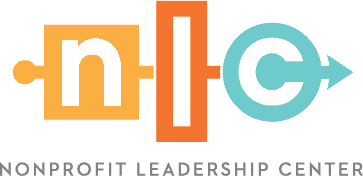While serving as a training support battalion commander in the U.S. Army, my command had the responsibility of capturing learnings after every operation. Known as After Action Reviews (AAR), these assessments brought a group of stakeholders together to reflect and discuss a task, event, activity or function to identify the key lessons learned as well as steps for continuous improvement. AARs allowed soldiers, through self-discovery, to develop, learn and grow by analyzing our work together.
As I reflect on the current operating environment for nonprofits, I can’t help but think about my time in the U.S. Army and the important role that After Action Reviews can play in strengthening the sector. The same process of capturing key lessons learned after military operations is essential to nonprofits as they face daily uncertainties and complexities.
3 Steps to Conducting an After Action Review
An After Action Review consists of a three-step process to evaluate and assess a completed activity, event or other initiative. Here is how to implement AARs at your organization.
Step 1: Planning & Preparation
Create an environment where staff and stakeholders feel safe and comfortable to have honest conversations about a program, event or initiative that your organization recently completed.
Select a facilitator for the AAR discussion. It is best to choose someone who is confident, organized, compassionate, able to manage group dynamics effectively, and open-minded. He or she will be responsible for the following planning actions:
- Select AAR participants — This should include the event organizers/planners, event executers and supporting team as well as organizational leaders.
- Schedule the AAR — Immediacy is the key. Hold your AAR no more than one week after the occasion/event being reviewed. If feasible and possible, the day after the occasion/event is ideal. The goal is to have the occasion/event freshly in everyone’s mind.
- Select a location for the meeting — During the current climate, conducting AARs virtually through Zoom, Microsoft Teams or another digital platform is best to ensure social distancing and personal safety. When it is safe to gather again, conduct AARs at the site of your event, function or activity. Being able to visualize the event as it was happening and hear what was going on from those in attendance adds to the total immersion in the AAR process.
- Identify and acquire the necessary resources for the discussion and notes capture
- Develop and publish the rules of engagement — This is a list of rules to ensure participants can navigate the AAR process while being respectful and courteous of one another. Here are some sample rules of engagement to consider:
- No “thin skin:” Be open and welcome to receive general observations from participants relative to your actions during the event. It is about the behaviors not the character.
- No judgement.
- No criticism.
- No blaming.
- No complaining.
- Actively listen.
- Participate with intention.
- Be grateful.
- Create and share the AAR meeting agenda with participants — Here’s a sample agenda to help you get started:
- Welcome and introductions
- Introduce the AAR process and its purpose
- Share the rules of engagement (see above)
- Review the logistics, tasks, conditions and standards of the event/initiative
- Discuss the sequence of events for the occasion, including planning, preparation and execution
- Discuss each aspect of the event (see Step 2 below)
- Who are the heroes? Who needs to be recognized? Who needs to be appreciated?
- Summarize the key lessons learned
- Identify when the follow-up session will be held
- Allow for questions and final comments
- Wrap-up and thank-you
Step 2: Execution
Conduct your AAR meeting following the agenda outlined in Step 1. Be sure to identify someone to capture notes.
For each significant aspect of the event or initiative you are reviewing, discuss the following as a group:
- What was supposed to happen?
- What actually happened?
- What went well and why? (I liked …)
- What could be improved and how (root causes)? (I wish …)
- What were the key lessons learned? (Cluster themes)
- Prioritize lessons learned: Summarize three areas to sustain and three areas to improve
- What are the follow-on actions required?
- Who owns the action?
- By when will the action be completed?
Here are a few additional recommendations to keep in mind when conducting your nonprofit’s AAR:
- Allow for maximum participation consistent with the rules of engagement. Ensure everyone has a voice and the chance to be heard.
- Be cognizant of time, and keep participants on track with the agenda.
- Ensure that the recorder and note-taker is capturing the most salient points.
- Identify specific improvements and assign the right individuals to address them.
- Set a date to complete all next steps.
- Set a date and facilitator for a follow-up session.
Step 3: Follow-Up
After the meeting, provide AAR participants and your nonprofit’s leadership team with a written report that captures the key findings from the AAR session. This includes what went well, what could be done better, and most importantly, the key lessons learned.
Here are some recommendations to ensure a successful AAR follow-up:
- Complete and publish the written summary report within two weeks of the AAR session.
- Ensure that the appropriate leadership and team members have received a copy of the AAR summary report.
- Ask organizational leadership to appoint a curator of all your nonprofit’s AARs and the lessons learned. This ensures that when a similar or the same event is being planned in the future, the lessons learned are reviewed and discussed.
- Schedule a follow-up session to address all next steps or “fixes.”
Why Should Nonprofits Conduct After Action Reviews?
There are several compelling reasons that nonprofits should conduct AARs:
- Strengthens team building, trust and understanding
- Creates a constant improvement process
- Promotes shared learning, growth and development
- Contributes to organizational and individual performance
- Builds confidence, credibility, relevance and resilience
- Ensures a venue for sharing feedback, evaluating programs/strategies and space for timely evaluation
In addition to the formal AAR process, nonprofits can conduct an informal AAR anytime as an immediate, on the spot assessment. Informal AARs require minimal resources but enable leaders to capture key lessons learned from a task or activity. A series of informal AARs can provide input into a formal AAR.
As a learning tool, AAR’s can have a lasting effect and impact on nonprofit organizations. The process allows for the transition from individual learning to group learning to organization learning. As nonprofits, we must continue to “sharpen the saw” as Covey (1989) would say to maximize the effectiveness and viability of our organizations. Conducting AARs helps do that by capturing lessons learned and applying those learnings to drive continuous improvement toward mission delivery.
READ NEXT: Measuring Your Nonprofit’s Effectiveness: Understanding the Core Capacity Assessment Tool
References & Resources
Covey, S. R. (1994). The 7 Habits of Highly Effective People: Powerful Lessons in Personal Change. New York: Rosetta Books, LLC.
Headquarters, United States Army. (1993). TC 25-20: A Leader’s Guide to After-Action Reviews. Washington, DC: Headquarters, United States Army.
Mahal, A. (2018). After Action Review: Continuous Improvement Made Easy. Baskin Ridge, NJ: Technics Publications.
Sinek, S. (2009). Start with Why: How Great Leaders Inspire Everyone to Take Action. New York: The Penguin Publishing Group.


